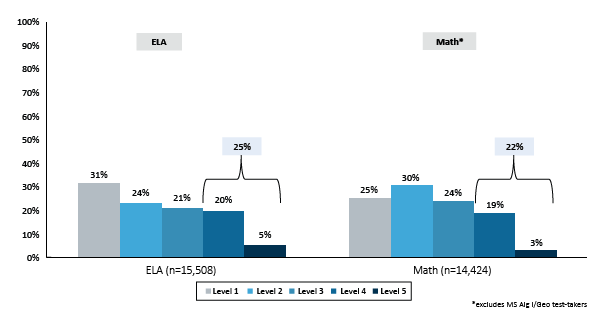WASHINGTON — D.C. students aren’t meeting basic standards in math and English, according to data released by city officials on Monday.
This is the first time D.C.’s elementary and middle school students have taken the Partnership for Assessment of Readiness for College and Careers. Students are graded 1 through 5 on the tests. Those who score 4 or 5 are deemed ready for college and careers after they graduate.
Officials say the new tests are more rigorous than previous standardized exams and will take some getting used to.

Nonetheless, the results unveiled Monday are “sobering,” D.C. Schools Chancellor Kaya Henderson said in a news release. “But we know our students can meet the new, higher standard we set for ourselves.”
Only 24 percent of D.C.’s public and charter school students scored proficient or above on the math Partnership for Assessment of Readiness for College and Careers. That includes students who are taking advanced Algebra I and Geometry classes.
Seventh graders are performing the worst of all subgroups, the data show. Only 17 percent of those students are proficient.
On the English Language Arts exam, only 25 percent of D.C.’s students hit the mark. More than 77 percent of sixth graders fell short, statistics show.
“Using this data as a foundation, we can track the growth of our students year to year,” Jack Jacobson, president of the D.C. State Board of Education, said in a news release. “Growth is a critical measure because it means our students are progressing in their education.”
Students who score poorly on the exams still have chances to graduate. School leaders say the city’s Cornerstones Initiative will make sure students get the same level of rigor across all wards. The school system has extended school days at 41 schools to make sure students get additional instruction.
“I don’t think that this one score on the PARCC tells parents that kids can’t graduate successfully from DCPS or DC Public Charter Schools,” Henderson said. “It takes a long time. People want us to flip a switch and everybody is going to be off to Harvard. That’s not how it happens.”
Students in special education programs struggled with the exams as well. Minorities and economically disadvantaged students also scored low.
Thirty-one percent of black students and 26 percent of Hispanics scored level 1 on the English exam. Twenty-five percent of black students and 17 percent of Hispanics scored level 1 on the math test.
“Our results show us what we’ve already known, that some of our groups of students need additional levels of support,” Henderson said. “We’ve long seen disparities in achievement across the District and this test puts these disparities into clear focus.”
WTOP’s Marcus Moore contributed to this report.






